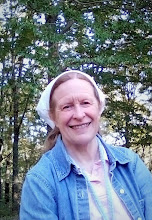In this April 13, 2005, article in the Mail Tribune (it serves southern Oregon), reporter Bill Kettler talks about a rural success story that started with a 15-year-old boy tinkering with batteries and diodes and switches and other fun stuff.
(Is this where I mention that certain very dear relatives of mine were lucky to have a house left after their various and assorted sons got through with their various and assorted youthful scientific experiments in the basement?... Or that one of my brothers once managed to knock a radio station temporarily off the air as the result of some enthusiastic but uninformed Thomas Edison wannabe work? I don't know what would happen these days, but I'm here to tell you that in the 1960s it was amazing how quickly law enforcement could react to suspected sabotage pertaining to duly authorized broadcasts... Boys can be very interesting to have in a family, that's for sure.)
The Henry family has had better than average luck with its sons, apparently:
The Henry family lives on a homestead off the power grid (not all that uncommon in this state). Read the title-linked article for more on the family and their chosen lifestyle and how this one invention has changed things.A backpacking trip spawned a family business that brings light to people across the United States and around the world.
Barclay Henry wanted a small, dependable flashlight that wouldn't need replacement batteries while he walked from Mexico to Canada on the Pacific Crest Trail. His younger brother, Ben, made a flashlight from a cordless phone battery, a 35 mm film container and a light-emitting diode.
By the time Barclay reached Oregon, Ben had refined the flashlight to its bare essentials - a nine-volt battery and a tiny snap-on plastic cap that includes a waterproof switch and two light-emitting diodes.
The little light drew rave reviews from backpackers along the trail. Vic Henry, Ben's dad, realized his son might be on to something, and encouraged Ben to seek a patent on the design as a home-school project.
Ben was only 15 when he designed that first crude flashlight six years ago. Now, at 21, he has a patent for the 1.5-ounce Pak-Lite, and the Henry clan - mom, dad and four brothers - has a home-based business that could help them fulfill a long-held dream of self-sufficiency...
By the way, if you aren't from Oregon, you might not understand how we carve up the state by regions. What is called Southern Oregon isn't the southern half of the whole state (as you might expect it to be), but is pretty generally considered to be the most southern portion west of the Cascade mountains. In most other states, of course, a region so situated would be called Southwest Whatever. What can I say? This is Oregon. Our history and politics are a little confusing, to say the least.

No comments:
Post a Comment